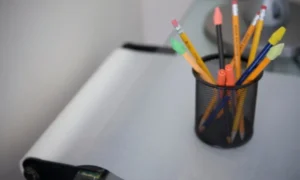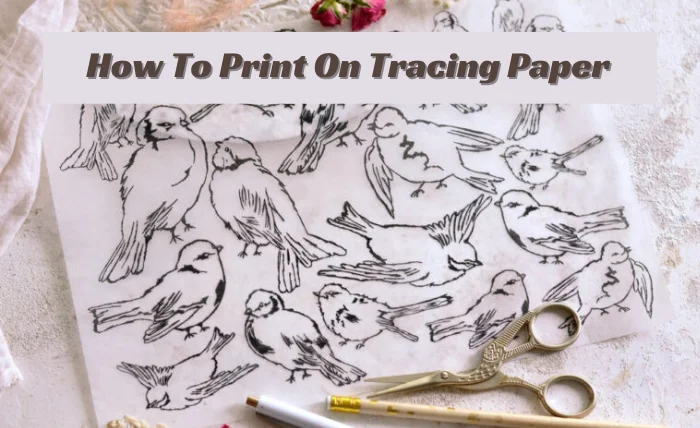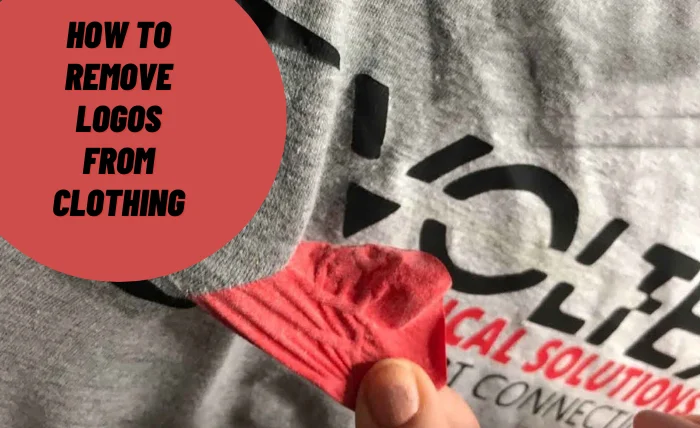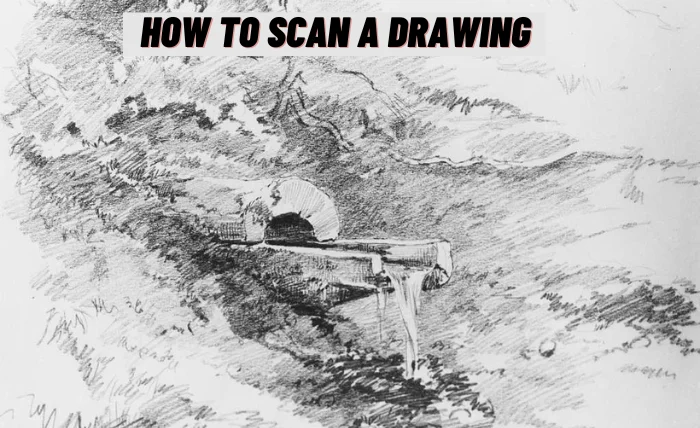Tracing paper can be an excellent material for printing designs, artwork, or documents that need transparency. However, outlining paper’s thin and delicate nature makes it tricky to print using regular methods. You may avoid jams or damage to the form with the proper techniques. Fortunately, printing on tracing paper is possible with simple preparation and adjustments. With the correct printer settings, paper handling, and care in feeding, you can successfully print on tracing paper at home or with professional machines.
This article will teach you tips and methods for hassle-free tracing paper printing. You’ll learn the best specific printer brands, paper types, ink, and other secrets for making your tracings look crisp, clear, and professional.
The Basics: What is Tracing Paper?

Tracing paper, also known as vellum, is a translucent paper that allows light to pass through. Its smooth surface makes it ideal for tracing or printing images. Before diving into the printing process, it’s essential to understand the unique characteristics of tracing paper. Unlike regular printer paper, tracing paper requires a delicate touch and specific settings to achieve optimal results.
Selecting the Right Tracing Paper
Not all tracing papers are created equal. To ensure a successful printing experience, choose a tracing paper with a weight compatible with your printer. Lighter weights may risk jamming, while heavier weights can affect image quality. Experiment with different options to find the perfect balance for your specific needs.
Printer Settings
Adjusting your printer settings is crucial when working with tracing paper. Begin by selecting the appropriate paper type on your printer settings menu. Opt for environments accommodating transparency, ensuring the ink adheres correctly to the tracing paper without smudging or bleeding.
Mastering the Art of Leading
Loading tracing paper into your printer requires finesse. Load only a few sheets at a time to prevent jams. Additionally, check for any dust or debris on the printer rollers, as these can adversely affect the paper feed. A clean printer ensures smooth and flawless printing on tracing paper.
Step-by-Step Guide: How to Print on Tracing Paper
Before embarking on your printing journey, gather all necessary materials: tracing paper, a well-maintained printer, and your desired image file. Ensure that your workspace is clean and free of any potential obstacles.
Adjusting Image Size and Placement
Open your image file in a graphic design software of your choice. Resize and position the image according to your project requirements. Keep in mind that the printed image will be a mirror of what you see on the screen, so adjust accordingly.
Choosing the Right Ink
The correct ink is paramount to achieving vibrant and clear prints on tracing paper. Opt for inkjet printers with pigment-based inks for the best results. These inks are designed to adhere well to the smooth surface of tracing paper, producing sharp and durable prints.
Print Preview for Precision
Before hitting the print button, take advantage of the print preview option. This allows you to inspect the placement and size of your image on the tracing paper. Make any necessary adjustments to avoid unnecessary reprints.
Printing with Precision
Once satisfied with the print preview, print your image on tracing paper. Be patient during printing, and avoid handling the form immediately after printing to prevent smudging. Allow the ink to dry completely before moving on to the next steps.
Creative Applications of Printed Tracing Paper
Printed tracing paper can be seamlessly integrated into mixed-media art projects—experiment with layering the printed images over paintings or collages to add depth and complexity to your creations.
Unique Gift Wrapping
Elevate your gift-giving by using printed tracing paper as wrapping paper. The translucent quality adds an element of intrigue, allowing a sneak peek at the gift within.
Personalized Stationery
Create bespoke stationery by printing intricate designs on tracing paper. Attach the prints to cardstock or high-quality paper for elegant and personalized note cards, invitations, or letterheads.
DIY Stickers and Decals
Unleash your creativity by transforming printed tracing paper into custom stickers or decals. Cut out the printed designs and adhere them to various surfaces for a unique and personalized touch.
Window Art Illumination
Harness the translucent nature of tracing paper to create stunning window art. Print intricate designs and affix them to windows for a play of light and shadow that adds a touch of magic to any space.
Common Issues Addressing Ink Smudging
Ink smudging can be a common issue when printing on tracing paper. Ensure the ink is fully dry before handling the printed sheets to combat this. Consider using a fixative spray to set the ink and prevent smudging.
Preventing Paper Jams
If you encounter paper jams while printing on tracing paper, check the printer settings to ensure the paper type is correctly selected. Adjust the paper feed to accommodate the delicate nature of tracing paper, and always load a minimal number of sheets at a time.
Enhancing Print Quality
To enhance print quality, experiment with different printer resolutions. Higher resolutions generally result in crisper and more detailed prints. However, consider file sizes and processing times when opting for higher solutions.
Choosing the Right Image File Format
The choice of image file format can impact the final print quality. Opt for high-resolution images in formats such as JPEG or PNG to ensure sharp and detailed prints on tracing paper.
Exploring Advanced Techniques Image Transfer Methods
Beyond direct printing, explore alternative methods of transferring images to tracing paper. Techniques such as heat transfer or solvent transfer can open up new avenues for creativity, allowing you to experiment with different textures and effects.
Combining Digital and Analog
Merge digital and analog techniques by incorporating hand-drawn elements into your digital designs before printing on tracing paper. This hybrid approach adds a personal touch and a unique dimension to your creations.
Layered Printing for Depth
Achieve depth in your printed designs by experimenting with layered printing on tracing paper. Print multiple copies of a single image and overlay them to create a nuanced and multi-dimensional effect.
Embellishing with Color
While tracing paper is traditionally associated with monochrome prints, consider adding color to your designs. Experiment with colored inks or incorporate hand-painted elements to create vibrant, eye-catching images.
Creating Negative Space Art
Explore negative space by strategically leaving portions of your tracing paper blank. This technique can result in visually intriguing prints that play with the interplay of light and shadow.
The Potential: Future Trends Sustainable Printing Practices
Explore sustainable printing practices as the world becomes increasingly conscious of environmental impact. Choose eco-friendly inks and recycled tracing paper to align your creative pursuits with a commitment to sustainability.
Augmented Reality Integration
Embrace technology by exploring augmented reality (AR) integration with printed tracing paper. Imagine a future where your static prints come to life through digital overlays, adding a dynamic and interactive element to your artistic expressions.
Collaborative Art Projects
Tap into the power of collaboration by initiating art projects that involve multiple artists contributing to a single piece of tracing paper. This communal approach can result in diverse and visually captivating creations.
Art Therapy Applications
Recognize the therapeutic potential of printing on tracing paper in art therapy. The tactile and visual elements of the process can offer a therapeutic outlet for individuals seeking creative expression and emotional release.
Virtual Workshops and Tutorials
Share your expertise by hosting virtual workshops and tutorials on printing on tracing paper. Connect with a global audience eager to learn new techniques and unleash their creativity in the comfort of their own homes.
Conclusion
The intricacies of printing on tracing paper open up a world of creative possibilities. This guide has equipped you with essential tips, from selecting suitable materials to exploring advanced techniques and future trends. Whether an experienced artist or a novice, the key lies in embracing experimentation. So, dive into the enchanting realm of printing on tracing paper, celebrating creativity on this delicate canvas.












